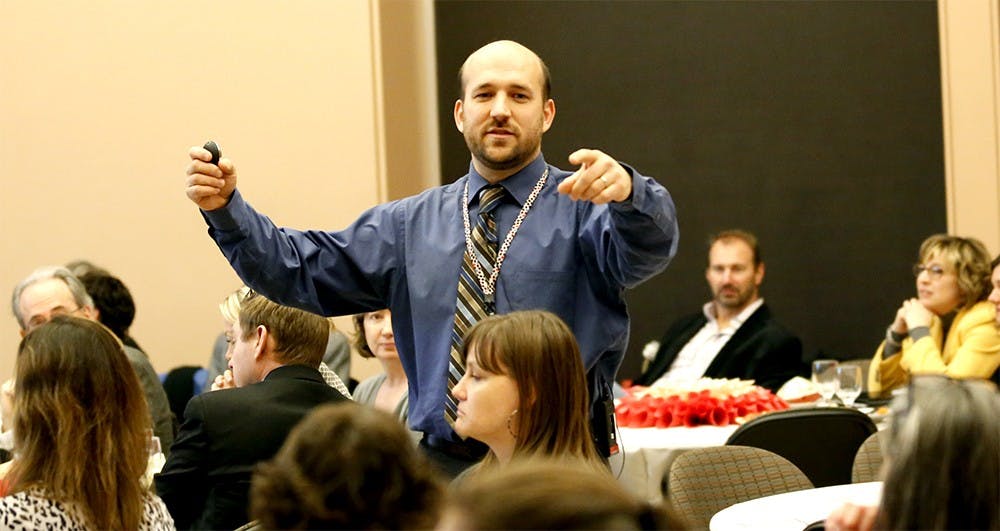The Mosaic Faculty Fellows introduced an initiative that promotes active learning and engagement in classrooms at a formal luncheon in the Grand Hall of Neal-Marshall Black Culture Center on Friday.
The IU Mosaic Active Learning Initiative will be launched first with IU-Bloomington. IU-Purdue University Indianapolis and other regional campuses will follow, said Stacy Morrone, associate vice president for learning technologies.
Active learning is a method of teaching that emphasizes more on physical and verbal involvement in the lecture hall than usual.
“It’s giving students the chance to move around, work together and share what they do,” Morrone said.
Vice Provost of Undergraduate Education Dennis Groth said active learning is more effective as a teaching method than lecture learning because it is more inclusive of all kinds of learners.
“It’s in the strategic plan because it’s in our DNA,” he said.
At one point in the event Adam Finkelstein, an education developer at McGill University, asked attendees when they learn best. A variety of answers were given, including physically performing the activity and personal interest in it.
“I noticed that no one said ‘When I’m being lectured at,’” Finkelstein said.
Students have also shown an inclination toward active learning, he said. During the PowerPoint presentation, Finkelstein displayed numerous anonymous quotes from students who said active learning classrooms improved their learning.
Second-year masters student Sabina Ramazanova said she has experienced both active learning and more traditional learning, and she said she prefers the former.
“It’s very useful for students to get engaged,” she said. “It’s really showing its positive outcomes.”
While Finkelstein said he doesn’t believe in banning lecturing, the problem is it depends too much on “the firehose model of learning.” By this, he said he means a lecturing instructor could simply “spray” information all over his or her pupils without any sort of feedback.
He said the best ways of learning are making connections, focusing on the learning experience, staying motivated, receiving feedback often and collaborating among peers. Active learning is an attempt to promote this, he added.
“Learning is not done to them, it is done with them,” he said, in reference to students.
Active learning classrooms come with a variety of features such as large, open areas, computer labs and round tables that encourage student interaction.
These classrooms are designed solely to strengthen things like student-faculty interaction, technological access and a supportive campus environment, Finkelstein said.
Finkelstein said accepting the idea of active learning classrooms may require an entire change of personal philosophy, but he said he does think change is possible. Most teachers are more interested in active learning than lecturing, he said.
While active learning is not a new concept and has been used internationally for several years, he said he still wants to continue speaking on it and make sure that it is incorporated more deeply in the educational system.
“Good teaching can withstand poor spaces,” Finkelstein said. “Poor teaching can withstand good spaces.”




